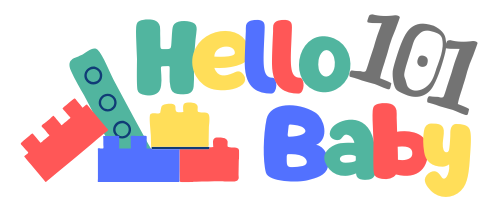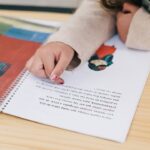The best age to teach second language skills to children is at a very early stage, ideally before they reach the age of seven. The most advantageous period is from birth to three years old.
During this time, young children utilise a memory system that operates without conscious control. They acquire new languages naturally through daily play and conversation.
Research indicates that children benefit from learning languages at any age, but the best age to teach second language abilities is when they are young. Immersion and genuine interaction significantly strengthen language skills, as well as enhance memory and problem solving abilities.
Children also develop better pronunciation and increased confidence, particularly when they learn in enjoyable and nurturing environments.
Key Takeaways
- Learning a second language before age seven is best. It is even better if children start from birth to three. This helps them learn in a natural way. They can also sound like native speakers.
- Learning a language early helps memory and problem solving. It also helps with pronunciation and makes children more confident.
- Children aged four to seven still learn fast. They can get strong language skills if they practise often.
- Older children can also learn a second language well. They need good teaching, motivation, and enough practice. Their accent might be different.
- Parents and schools are very important. They should make learning fun and supportive. They should also encourage children to use the second language every day.
Best Age to Teach Second Language
Birth to Age 3
Many experts think it is best to start teaching a second language from birth. At this age, the brain can change and learn new things very quickly.
Scientists like Penfield, Roberts, and Lenneberg talked about the critical period hypothesis. This idea says children learn languages best before puberty, with the easiest time before age three.
- Studies show babies and toddlers can hear and copy sounds from any language.
- Babies learn sounds best before their first birthday. They learn grammar rules best between 18 and 36 months.
- If young children hear two languages often, they become strong bilinguals. This works best when they get lots of language at home and in school.
Children who start learning a second language this early often sound like native speakers. They also get better memory and problem solving skills. The best time to teach a second language is when the brain learns most easily.
Note: How much and how well children hear both languages is very important. Children who use both languages often become the most skilled.
Ages 4 to 7
The best time to teach a second language also includes ages four to seven. Children in this group still have brains that can change and learn fast.
The best time for learning sounds starts to end, but they can still learn well. Research shows children who start between four and seven can sound almost like native speakers if they practise often.
| Age Group | Accent and Fluency Advantage | Brain Adaptation | Key Findings |
|---|---|---|---|
| 4 to 7 | Strong advantage for native like accent and fluency | High plasticity in speech pathways | Sensitive period ends around age 7; children still benefit from neuroplasticity |
- Bilingual children in this group are good at switching tasks and making choices.
- They get better at hearing and using sounds, which helps them read and write.
- Hearing both languages at home and school helps them grow and learn more.
Children who learn a second language before age seven often sound like native speakers. This age is still a great time to teach a second language, as children can change their speech and grammar easily.
Ages 8 and Beyond
Learning a second language after age eight is still very helpful, but it is different. The best time for learning a native accent and grammar starts to close. Still, children and teens can get very good at a new language. A big study from MIT found children up to age 17 or 18 can learn grammar fast, even if they do not always sound like native speakers.
- Older children can understand language rules and words better.
- They may learn faster in class, especially with clear teaching.
- Some problems are needing good teachers and enough practice, as school may not give as much language as home.
Tip: Being motivated and having some language skills already helps a lot. Older children who practise often can learn quickly.
The best time to teach a second language is as early as possible, but good results can happen at any age. Children who start after age eight can still become fluent and confident, especially with good teaching and lots of use.
Early Childhood Benefits
Brain Development
Young children’s brains can change and grow quickly. This time is when the brain makes many new connections. These connections help with learning language.
By six months, babies’ brains start to focus on sounds from their own language. Myelination happens fast in parts of the brain used for language. This makes brain signals move faster.
These changes help children understand and use language better. The brain is very flexible at this age. Children can learn new words and grammar rules easily. Talking with parents and hearing lots of words helps the brain grow. Children who hear two languages early build strong brain pathways for language.
Accent and Pronunciation
Hearing a second language early helps with accent and pronunciation. Bilingual children can tell the difference between sounds in both languages. They can also make these sounds well.
For example, French–English babies know sound differences in both languages by age one. Children who hear tricky sounds, like the rolled ‘r’, can say them better in other languages.
Research shows that starting young makes it less likely to have a foreign accent later. Still, practising the new language is important for good pronunciation.
Cognitive Growth
Learning two languages early helps the brain work better. Bilingual children have stronger skills for paying attention and switching tasks. They do better than monolingual children when they need to change rules or ignore distractions.
These children also understand how language works. Bilingual children feel more confident and understand others’ feelings. They can talk to more people and learn about different cultures. They also get better at making friends and asking good questions. Learning languages early helps children connect with many people.
Later Childhood & Beyond
Learning Styles
Older children and teens learn a second language in new ways. They use memory tricks, look for patterns, and compare words. Young children may find it hard to learn new words and understand stories.
But they often catch up in reading and spelling as they get older. Some words may still be hard for them, which can slow school progress. Older learners can think about ideas and rules in a deeper way.
Studies show that children aged 12 to 15 can sometimes learn a language faster than younger kids. This is true if they get clear lessons and really want to learn. Both young and older learners use the same brain parts for language. Age alone does not decide who will do best.
Motivation and Outcomes
Motivation is very important for learning a second language after early childhood. If children enjoy learning or are interested, they work harder and remember more. Getting rewards or praise can help, but it may not last long. A caring home and school make children feel safe to try speaking.
Children who see real reasons to use a language, like talking to friends or watching shows, learn faster. Knowing other languages or having a strong first language helps too. Teachers who make lessons fun and friendly help children stay excited to learn.
Overcoming Challenges
Children who start learning a second language later can face problems. Many children listen a lot before they start to speak.
Sometimes, grammar from their first language mixes with the new one. Reading and writing in a new language can take five to seven years to get good at.
Some children may be quiet or act out because of language troubles. Teachers can use pictures, give work in the home language, and ask classmates to be patient.
Teaching new words in real life ways and giving lots of practice helps. Talking with families and making the classroom welcoming for all cultures also helps children do well.
Supporting Language Learning
At Home
Families are very important for helping children learn a second language. Parents can make a home full of language by reading books in both languages.
They can ask children to join groups or clubs where the second language is used. Making learning fun keeps children interested.
Parents use games, songs, and cartoons to help children enjoy new words and sounds. Doing things like cooking or acting out stories helps children practise the second language in real life. Some families have nannies or carers who speak the second language, so children hear and use it more.
- Read often in the home language.
- Join social groups that use the second language.
- Play games, sing songs, and watch shows for fun learning.
- Use the second language in daily life.
- Ask carers who speak the second language to help.
Parents help shape their children’s language skills. When parents read and talk in the second language, children learn more words and feel more sure of themselves. The table below shows how different ways parents help can support language learning:
| Parental Action | Impact on Language Learning |
|---|---|
| Reading together | Grows vocabulary and makes learning fun |
| Playing language games | Makes children want to learn more |
| Daily conversations | Helps children speak better and feel braver |
| Helping with homework | Makes understanding and skills stronger |
In School
Schools have special programmes to help children learn a second language. Immersion classes use the second language for most lessons, so children get better at speaking it.
Two way immersion classes mix children who speak both languages, so everyone learns together. Studies show children in these classes often become strong bilinguals and do well in other subjects like maths and reading.
Immersion students also get better at thinking and learn about other cultures. The more time spent using the second language, the better children do.
Teachers make classrooms friendly with books and posters in both languages and ask children to use both languages with friends.
- Early and two way immersion classes help children become strong bilinguals.
- Lessons in the second language help children do well in school.
- Bilingual classrooms help children from all backgrounds learn together.
Encouraging Consistency
Practising often is very important for learning a language. Children who hear and use the second language every day learn faster and remember more words.
If children hear the language less, they may not learn as quickly, especially when they are young. Families and schools can help by making regular times for language use.
Reading together, writing in journals, and using language apps help keep learning steady. Going outside, joining camps, or visiting museums helps children use the language in real life. Spending time with native speakers or groups also helps children feel more confident.
- Make a daily or weekly plan for language use.
- Have a special place for language activities.
- Use books, apps, and games together.
- Practise the language during meals and trips.
- Join clubs or events where the language is spoken.
Tip: Using the second language often at home and in school helps children become confident and skilled.
Studies show it is best to start teaching a second language when children are young. But children of any age can do well if they get good help. Parents and teachers who use lots of language and fun activities from different cultures help children do better.
All children can gain from learning a second language. They get better thinking, social, and school skills.
| Age Group | Long Term Outcomes |
|---|---|
| Early Starters | Sound like native speakers, learn more, many benefits |
| Later Starters | Learn quickly at first, can still get strong skills |
FAQ
What if a child mixes two languages when learning?
Children sometimes use both languages together at first. This is called code switching. It means the child is learning both languages. As children get older and practise more, they usually keep the languages apart.
Can children become confused by learning two languages?
Children do not get mixed up by learning two languages. Their brains can manage more than one language. Bilingual children often switch between languages without trouble.
How much time should children spend on a second language each day?
Experts say it is best to use the language every day. Even 15 to 30 minutes daily helps a lot. Doing this often makes language skills stronger over time.
Do parents need to speak the second language fluently?
Parents do not have to be fluent. They can help by reading books, playing games, or using language apps. Children learn well when they hear and use the language often.



